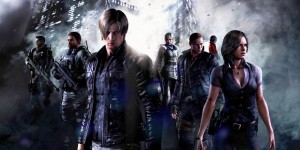Powet Top 5: Top 5 Bastard Stepchildren of Famous Gaming Franchises (And why they weren’t all that bad)
by William Talley, filed in Games, Powet Top 5 on Mar.09, 2013
Welcome to the Powet Top 5, where we explore the top (and bottom) 5 items we think are relevant to any of a variety of topics that span the imagination. Sit back, read, and respond.
Everyone has that one member of the family they’d rather not talk about. You know the type, they just can’t seem to get their shit together. If they’re not at home all day watching Real Housewives/SportsCenter/Jerry Springer, then they’re out partying and getting inebriated. They’ve been in and out of jail like it’s got a revolving door, they couldn’t hold down a job if they had a 2-ton paper weight, and they’re having more babies than they really can afford.
Then there is that other type of family member that isn’t mentioned, but perhaps mom and dad are being a bit too hard on them. You know the type. They’ve made one bad mistake and are trying their hardest to turn their life around, but the older heads in the clan aren’t making it easy for them. Or maybe it’s the girl in your all white/Asian family that married a black man. Or maybe it’s the gay/lesbian/atheist/Muslim in your Evangelical Christian household. Or they’re a fan of Lebron James and the Miami Heat…..and your family lives in Cleveland.
Well, with video games, it’s kinda like that too. Every great franchise has at least one title that is horrible. Zelda: Wand of Gamelon. Mario is Missing. Street Fighter: The Movie: The Game. Mortal Kombat Advance. Every great franchise also has at least one game that’s not terrible, but for some reason it’s looked down upon compared to others in its franchise. You know, Grand Theft Auto: Liberty City Stories. Final Fantasy XIII. Silent Hill: The Room. Maybe they had some gameplay issues that bought it down. Or maybe we grown to expect too much of our favorite franchises. Or maybe jaded fanboys were all too happy to pick apart its flaws. Either way, this week’s top 5 celebrates those games that get a little more hate than they should.
1. Street Fighter EX (Arcade, Playstation 1)
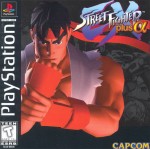 What it Was: The first attempt at a 3D Street Fighter. Familiar pugilists such as Ken and Chun Li slugged it out with a group of newcomers.
What it Was: The first attempt at a 3D Street Fighter. Familiar pugilists such as Ken and Chun Li slugged it out with a group of newcomers.
Why we hated it: A 3D version of a 2D game? FUCKING BLASPHEMY!
What was actually wrong with it: Many of the newer characters had movesets similar to characters who were left out the game. For instance, Pullum was a stereotypical Arabian version of Cammy, Cracker Jack was basically Balrog with a baseball bat, and with Allen and Kairi, there were a few too many Ken/Ryu clones than there needed to be.
Why it wasn’t that bad: At least those characters had some good designs, and the more original characters that debuted in the spinoff series were even cooler. Skullomania? Area? Volcano Rosso? Shadow Geist? Many of these guys should of at least have been given a shot in a later Street Fighter game. Also, the home version packed some pretty cool extras. The Playstation game featured a remixed soundtrack, extra characters, a training mode, and a 3D version of the classic barrel busting minigame. Finally, despite the 3D look, this was every bit a Street Fighter game as its 2D cousins. The moves, combos, and controls were there, along with several familiar faces. Of course, the next time Street Fighter went 3D, we were a bit more appreciative of it.
2. Command and Conquer Generals (PC)
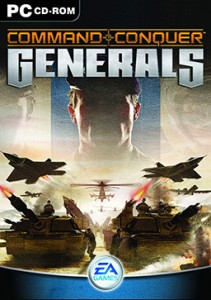 What it was: A spinoff of Command and Conquer taking place in a modern world (rather than Tiberium’s futuristic setting and Red Alert’s alternate past). Making use of the graphics engine from Renegade (another underrated C&C game if for no other reason than it was an FPS), it told the story of a three way war between the U.S, China, and a Middle Eastern terror group known as the GLA
What it was: A spinoff of Command and Conquer taking place in a modern world (rather than Tiberium’s futuristic setting and Red Alert’s alternate past). Making use of the graphics engine from Renegade (another underrated C&C game if for no other reason than it was an FPS), it told the story of a three way war between the U.S, China, and a Middle Eastern terror group known as the GLA
Why we hated it: It had nothing to do with Tiberium, GDI, Nod, Kane, or even any of the Red Alert mythos. It was pretty much C&C in name only. It had more in common with Starcraft than C&C.
What was actually wrong with it: The game was released in 2003, around the start of Iraq War II. This, combined with the fact that one of the factions was a mid-east terror group might have hit a little too close to home for some people.
Why it wasn’t that bad: While the jaded fanboy will say “it has more in common with Starcraft than C&C!” other players will say, “that’s the point!”. That basically meant that C&C finally adopted some more modern conventions of the RTS genre and benefited from them. An improved fog of war, unit upgrades, and more fleshed out hero abilities were part of some of the upgrades that helped Generals give the franchise a more modern look. Despite all the changes to the formula, at its heart is the same classic C&C experience. The game is slim on the micromanagement. Unlike its contemporaries, there is only 1 resource to gather, and it’s still possible (and encouraged even) to win by making a shitload of units and using them to bulldoze the enemy. C&C Generals is kinda like your best friend getting a whole new wardrobe. It’s the same guy, he’s just got a different look.
3. Dragon Age II (PC, Xbox 360, PS3)
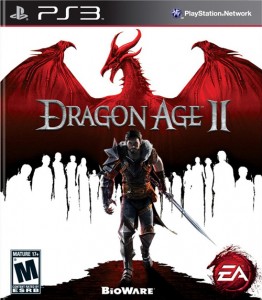 What it was: The sequel to Bioware’s modern-day fantasy classic. It told the tale of Hawke, a refugee whose story would span a decade.
What it was: The sequel to Bioware’s modern-day fantasy classic. It told the tale of Hawke, a refugee whose story would span a decade.
Why we hated it: It’s not Dragon Age 1! AND THEY DUMBED IT DOWN FOR CONSOLE PLAYERS!
What was actually wrong with it: It stripped out most of the game’s sense of exploration. Often times players will revisit the same area over and over again.
Why it wasn’t that bad: A lot of times when something is claimed to be ‘dumbed down for noobs/consoles/non-gamers’ by the gamers, that isn’t really the case. The people who say it’s dumbed down often have dumbing down confused with making something more playable and fluid, fixing problems that it had previously, and making it easier to pick up and play, such as the case with DAII’s combat. While it was more active than DAI, players could still assign tactics to their teammates, set strategy, and upgrade their abilities. It’s just that the combat moved more fluidly, and the menus are now easier to understand vs DAI. The story and characters are DAII’s true strength. Varric will have you cracking up, and you get pulled into your teammates and their struggles. Yes, even Merrill’s. Also, DAII’s setting gave you an up close and personal look at the Qunari, the race of giants who were barely hinted at in DAI. It also examined the templar/mage conflict from DAI, and gave you a sense of the two sides truly despising each other. It’s better to think of Dragon Age II as a side story of DAI rather than a sequel. If DAI was about the world, DAII is about the people, politics, and culture within it. Not only that, the plot threads introduced in this game do a great job of setting up and building anticipation for Dragon Age III.
4. SimCity Societies
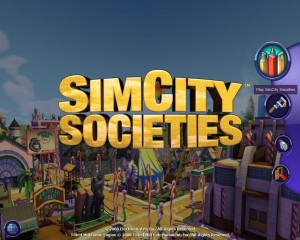
What it was: Developed by Tilted Mill Entertainment (as opposed to Maxis), SCS has players building a city from the ground up. Rather than creating a huge sprawling metropolis, you focus on a smaller area, placing individual buildings and managing the people’s happiness.
Why we hated it: They dumbed down SimCity!
What was actually wrong with it: This is one of the rare cases where the dumbing down accusations are true. Most of the micromanagement from SimCity has been stripped out, and the game has more in common with those free to play phone games (thankfully you don’t have to buy anything via microtransactions) than an actual SimCity title.
Why it wasn’t that bad: Unlike the most recent entry in the SimCity franchise, you didn’t need an always online connection The dumbing down only helped to make the game accessible to casual players, and it was cool seeing a close up view of your city and its citizens. Also the game has heavily modable for those who knew C# and XML, and for a while at least, an online exchange was set up with a modding community. While I’m glad that future SimCity games won’t take Societies’ slimmed-down approach, it’s still a very fun a game that’s easier to get into than other installments in the SimCity franchise.
5. Metal Gear Solid 2 (Xbox, Xbox 360, PS3, PS2)
What it was: The sequel to one of the most popular PS1 games of all time.
Why we hated it:

What was actually wrong with it: The cinema-heavy plot was a bit hard to follow for many gamers.
Why it wasn’t so bad: Despite the change in lead character, this was still classic and memorable stealth action which is an excellent follow up to the original. Some people even grew attached to Raiden, and if you were able to follow the plot, it was even more compelling than its predecessor. The game was filled with some awesome boss battles and emotional moments, and the Substance version of the game packed on hours of extra features including VR levels and minigames. Of course, the next time we saw Raiden in an MGS game, we liked him a lot more. That’s because he looked like this…

…..and did stuff like this:
Several other gaming franchises have severely underrated installments. What are some of yours?


 PS3
PS3
 Famicom Dojo
Famicom Dojo KEEP PLAYING
KEEP PLAYING KEEP PLAYING: Rewind
KEEP PLAYING: Rewind Powet Toys
Powet Toys Powetcast
Powetcast Hitchhiker's Guide POWETcast
Hitchhiker's Guide POWETcast















